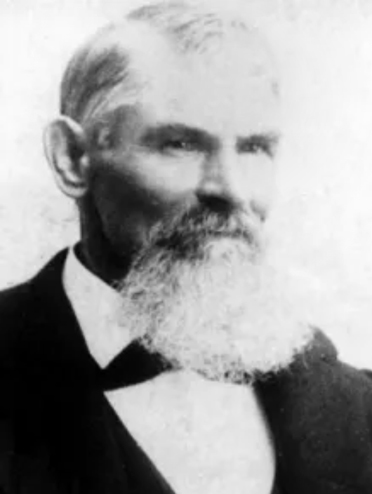Arvin Mitchell Stoddard (1825–1914)

Born in 1825 in Bastard Township, Leeds County, Upper Canada (now Ontario). He was the son of Nathaniel and Jane Stoddard and brother to Sheldon, Albert, and Rufus. The family later converted to Mormonism and joined the westward migration.
Traveled with a Mormon emigrant company under Charles C. Rich around 1852 to 1853. Reached the Salt Lake Valley in Utah, then continued west into California by the mid-1850s, likely entering through Cajon Pass. Settled in the San Bernardino area with other early pioneers.
Moved into the Mojave region during the late 1850s or early 1860s. Established or drilled Stoddard Well, which became a vital water source for travelers. Helped develop the Stoddard Wells Road, an important freight and emigrant route between Victorville and Barstow. Supported freighting operations and ranching efforts in the Victor Valley. Worked closely with his brother Sheldon, who was also active in transportation and settlement.
Stoddard Wells became a lasting geographic landmark and stop along desert routes. The road provided improved access for mining, settlement, and commerce. His work reflected the hands-on pioneer ethic of building essential infrastructure in difficult terrain. Remembered locally as one of the Stoddard brothers, among the earliest trailblazers of the Mojave Desert.
Remained in Southern California into the late 19th century. Died in 1914. His name endures through landmarks like Stoddard Wells, which commemorate his role in opening the Mojave to travel and settlement.
Arvin’s story illustrates the shift from Mormon settlement to broader regional development across Southern California. His contributions supported the growing network of trails, roads, and water sources that made desert travel possible. He stands as an example of the practical, industrious pioneers who built the foundation for future desert communities.
Sheldon Stoddard
Early pioneer and Mormon settler who helped establish routes, wells, and communities along the Mojave River during California’s frontier expansion.
Upper Mojave River Trail
Historic travel corridor following the upper Mojave River, connecting early settlements, ranches, and stage stops between Cajon Pass and Barstow.
Stoddard Wells Road
Historic wagon route branching from the Mojave River Trail, used by settlers and freighters linking San Bernardino with desert mining districts.
Stoddard Well
A vital water source established by the Stoddard brothers and later maintained by Hiram Hartman, serving travelers and stockmen crossing the high desert.
Pioneers
Early settlers who braved the Mojave frontier, building wells, trails, and communities that shaped the foundation of inland Southern California.
San Bernardino
Regional center and supply hub for Mormon settlers and desert pioneers, serving as gateway to the Mojave and points east during westward expansion.
Fish Ponds
Artificial ponds along the Mojave River near Stoddard Wells, providing food and water resources for ranchers and travelers in the arid landscape.
Mormon Crossing
Historic Mojave River ford near present-day Victorville, used by Mormon pioneers and freighters traveling between San Bernardino and Salt Lake City.
Mojave River
An intermittent desert river flowing underground much of its course, sustaining life, travel, and settlement along California’s inland frontier.